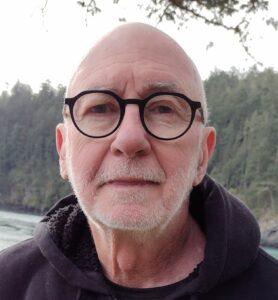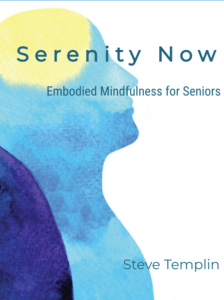Over the years I’ve seen countless healing techniques, many promising the sky. Yet, the most powerful and under-appreciated avenue for balancing and healing I’ve experienced is a universal, self-contained mechanism for healing and wholeness.
Within each of us is an inner, bodily-felt guidance system that we can call a felt sense, that aligns and balances our mind, body, and subtle energy systems.
The research that defined the therapeutic power of the felt sense was done at the University of Chicago under the direction of Eugene Gendlin, Ph.D. in the 1960’s.
At its most basic, the felt sense is that ‘strange or funny feeling’ that we get in our torso that hints at the rightness or wrongness of something. It’s an inner attention skill that can be honed to activate our capacity for self-regulation.
It’s there to alert us when we’re not living up to our true potential, as well as to guide us authentically forward where the thinking mind alone is inadequate.
The felt sense can also help us to release the old baggage and wounds that weigh us down and hold us back.
Why is the Felt Sense Ignored and Underappreciated if it’s so Valuable?
The Felt Sense comes from our body. Most of us, to one degree or another, have been conditioned to distance ourselves from our bodily-felt experience in favor of living primarily in our heads in the world of thought … often endless thought.
Since our bodies can be a source of pain … both physical and emotional, our tendency is to distance ourselves from this pain, or potential pain …. like the amoeba recoils from a negative influence in a petri dish … for self-protection.
So, to protect ourselves from pain, or the fear of pain, we have this tendency to abandon the felt experience of the body and lose the guiding wisdom it contains.
What Happens when we Ignore the Felt Sense?
When we’re cut off from the guidance of the felt sense we lose balance. We lose emotional balance, cognitive clarity, and the autonomic nervous system that’s responsible for our overall health and well-being loses integrity.
This lack of balance creates anxiety, depression, and virtually any physical symptom imaginable due to the influence of the autonomic nervous system (ANS).
Pain, especially chronic pain, is also a common symptom of having lost touch with the felt sense and the resulting ANS imbalances.
How Do We Reconnect with the Felt Sense?
The key to reconnecting with the felt sense is to sense a need for doing so. Often, the symptoms resulting from our disconnected state … the pain and/or physical and emotional distress … cause enough discomfort or suffering to motivate us to explore new possibilities.
Letting go and coming home to the inner experience of our bodies isn’t easy. We live in a culture where distraction is the acceptable norm. Staying busy, physically and mentally, is a distracting, protective strategy that keeps us disconnected from our inner guidance … while reinforcing our symptom pattern.
Reconnecting with the felt sense is done gently and patiently … with heart. The science from the Institute of HeartMath sheds light on the transformative power of loving kindness.
Kind and caring attention is turning out to be the inner balm that heals and is being verified not only by HeartMath studies, but other neurological research, most notably the fMRI studies on mindfulness.
While many of us would willingly give these qualities of kind, caring and non-judgmental loving attention to a friend or a pet in need, we often avoid tending to our own inner vulnerable experience in the same way.
Focusing: A Very Specific Form of Mindfulness
Focusing is the name of the process that I teach for learning how to reconnect with and be guided by the felt sense.
Dr. Gendlin has stated that Focusing is such a subtle inner act that it’s virtually impossible to learn without a supportive guide.
I share this because initial attempts at Focusing are often more confusing than helpful or enlightening. However, that is a natural part of the learning process and with coaching and practice, learning how to reconnect with the felt sense is extremely rewarding and empowering.

 Steve is a retired Doctor of Oriental Medicine, Acupuncture Physician, and HeartMath Trauma-Sensitive Certified Practitioner with over 35 years of clinical experience in the fields of Energy Medicine, Energy Psychology, and Biofeedback.
Steve is a retired Doctor of Oriental Medicine, Acupuncture Physician, and HeartMath Trauma-Sensitive Certified Practitioner with over 35 years of clinical experience in the fields of Energy Medicine, Energy Psychology, and Biofeedback. 